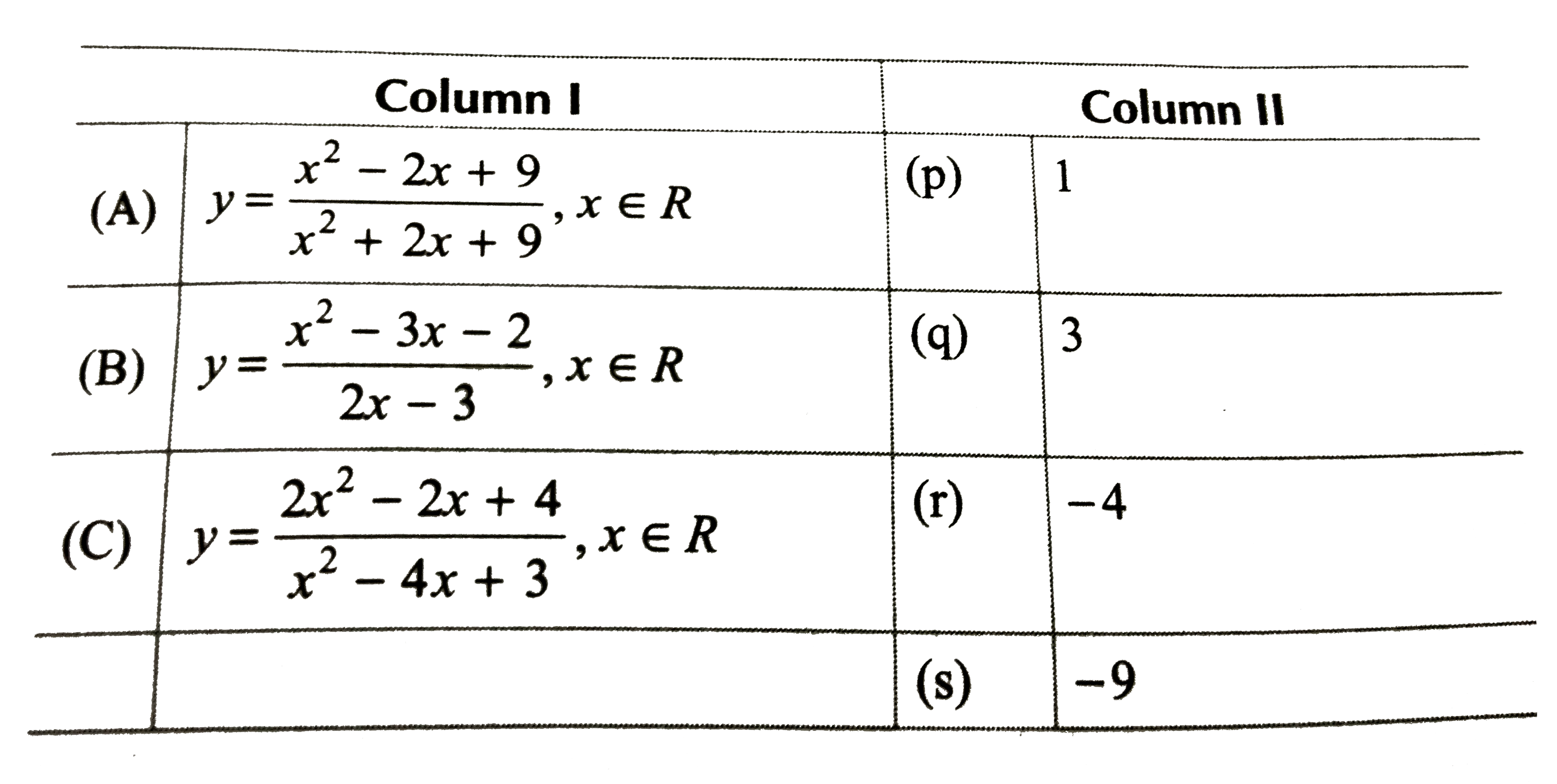If ax2−bx+c=0 have two distinct roots lying in the interval (0,1),a,b, ∈ N. The least value of log5 a b c isSolution in Punjabi
1
2
3
4
The correct Answer is:B
Let f(x)=ax2−bx+c has two distinct roots α and β. Then f(x)=a(x−α)(x−β). Since f(0) and f(1) are of same sign.
Therefore c(a−b+c)>0
⇒c(a−b+c)≥1
∴a2αβ(1−apha)(1−β)≥1
But α(1−α)=14=(12−α)2≤14
∴a2αβ(1−α)(1−β)<a216
⇒a216>1⇒a>4[∵alphq≠β]
⇒a≥5 as aεI
Also b2−4ac≥0
⇒b2≥4ac≥20
⇒b≥5
Next a≥5,b≥5 we get c≥1 ltbr ∴abc≥25
log5abc≥log525=2
Least value of logbabc is 2.
Topper's Solved these Questions
- THEORY OF EQUATIONSBOOK - ARIHANT MATHSCHAPTER - THEORY OF EQUATIONSEXERCISE - Exercise (Single Integer Answer Type Questions)
10 Videos
- THEORY OF EQUATIONSBOOK - ARIHANT MATHSCHAPTER - THEORY OF EQUATIONSEXERCISE - Exercise (Matching Type Questions)
2 Videos
- THEORY OF EQUATIONSBOOK - ARIHANT MATHSCHAPTER - THEORY OF EQUATIONSEXERCISE - Exercise (More Than One Correct Option Type Questions)
15 Videos
- THE STRAIGHT LINESBOOK - ARIHANT MATHSCHAPTER - THE STRAIGHT LINESEXERCISE - The Straight Lines Exercise 8 : (Questions Asked in Previous 13 years Exams)
1 Videos
- THREE DIMENSIONAL COORDINATE SYSTEMBOOK - ARIHANT MATHSCHAPTER - THREE DIMENSIONAL COORDINATE SYSTEMEXERCISE - Three Dimensional Coordinate System Exercise 12 : Question Asked in Previous Years Exam
2 Videos
Similar Questions
The sum of all the real roots of the equation |x−2|2+|x−2|−2=0 is
View SolutionColumn I contain rational algebraic expressions and ColumnII contains possible integers which lie in their range. Match the entries of Column I with one or more entries of the elements of Column II.

View SolutionIf 0<a<b<c and the roots α,β of the equation ax2+bx+c=0 are non-real complex numbers, then
View SolutionSolve the following system of inequalities graphically
x+5y≤25,2x+2y≥2,2x−2y≤0,x≥0,y≥0
View SolutionConsider the line L1:x−12=y−1=z+31,L2:x−41=y+31=z+32 find the angle between them.
View SolutionIf ax2−bx+c=0 have two distinct roots lying in the interval (0,1);a,b,∈N, then the least value of a , is
View SolutionConsider the quadrationax2−bx+c=0,a,b,c∈N which has two distinct real roots belonging to the interval (1,2).
The least value of b is
View SolutionConsider the quadrationax2−bx+c=0,a,b,c∈N which has two distinct real roots belonging to the interval (1,2).
The least value of c is
View SolutionIf ax2+bx+c=0 have two distinct roots lying int eh interval (0,1),a,b,c εN The least value of b is
View SolutionIf ax2−bx+c=0 have two distinct roots lying int eh interval (0,1),a,b,ceπslonN The least value of log5abc is
View SolutionConsider the quadrationax2−bx+c=0,a,b,c∈N which has two distinct real roots belonging to the interval (1,2).
The least value of b is
View SolutionIf ax2−bx+c=0 have two distinct roots lying in the interval (0,1);a,b,∈N, then the least value of a , is
View SolutionIf ax2+bx+c=0 have two distinct roots lying int eh interval (0,1),a,b,c εN The least value of b is
View SolutionIf ax2−bx+c=0 have two distinct roots lying in the interval (0,1),a,b,cEψlonN The least value of log5abc is
View SolutionIfax2−bx+c=0 has two distinct roots lying in the interval (0,1),a,b,c∈N. Then
View SolutionIf ax2+bx+10=0 does not have two distinct real roots, then the least value of 5a + b, is
View Solution
